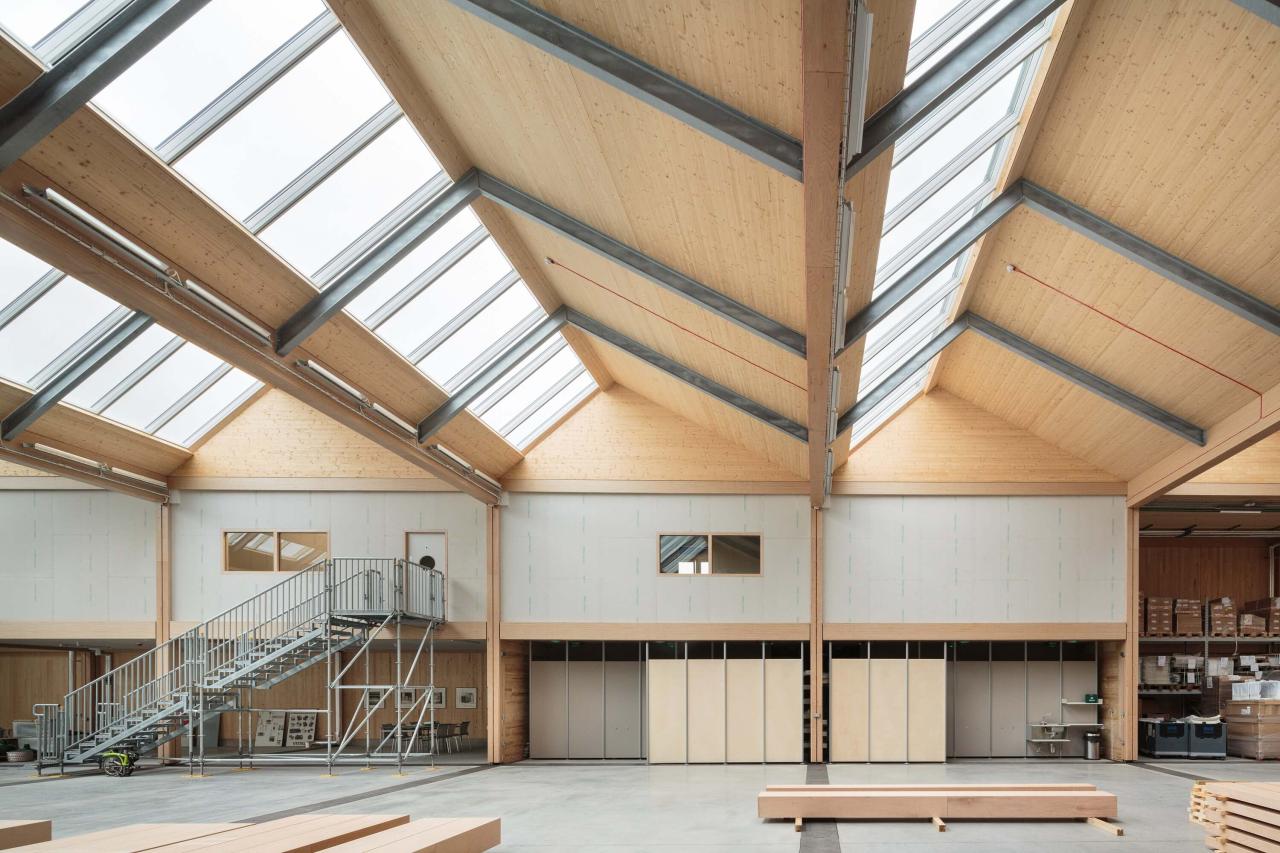
The name is Danish, the designer German, and the boss British. How Vitsœ continues the legacy of Dieter Rams.
Vitsœ with Martin Francis and Waugh Thistleton
2017
Pollmeier, D-99831 Amt Creuzburg
“It’s not really about furniture. What we want to promote is a better life with less but more lasting possessions,” says Vitsœ boss Mark Adams. This philosophy is also reflected in the company’s new building in the English resort of Royal Leamington Spa one hour north of London. It consists of a 135 m long, 25 m wide and 6 m high shed roof hall. The construction was designed by Mark Adams in cooperation with his staff, engineers and environmental scientists. Another major contributor was the yacht designer Martin Francis with whom Mark Adams shares a passion for Victorian craftsmanship.
The load-bearing elements of the building are made from BauBuche. Mark Adams first came across this innovative material at a trade fair in Munich and instantly knew that he wanted to use it in his next project. Thanks to its high strength, BauBuche allows for exceptionally slender constructions. The main beam made in BauBuche GL70 is for instance only 600 mm high. If made in steel, this girder would probably not be more slender. In addition, BauBuche fitted right into the system concept behind the design. Mark Adams came up with a factory hall that can be easily extended and adapted as the business develops. It is meant to last for centuries rather than only a few decades.
The interior is flooded in light entering through the continuous rows of windows facing north. Like the early factories of the Victorian industrial age, the building is designed to make best use of daylight. “When we discovered electric lighting, we unfortunately forgot what nature gives us for free.” According to Adams, the amount of light inside the building is particularly impressive on overcast days. While 300 lux is the minimum lighting requirement for this type of production hall, the sunlight entering the building provides up to 1000 lux. During the summer months, there is no need for artificial light. In winter, LED strip lighting powered by photovoltaic cells on the roof help illuminate the factory hall. There is no forced ventilation, and the air temperature rises and drops with the seasons. “This is much healthier,” says Adams. His factory is an analog building, as nearly everything is operated by hand, including the large sliding doors. Adams calls it low-tech – plain and simple. The construction costs were EUR 1740 per square metre, and Adams is happy with this price. “Cheap constructions always cost more in the long run.”
Mark Adams also wanted to break down any barriers between management and production staff. “We are one team,” is his philosophy, and everybody gathers in the canteen to eat lunch together. To provide the food, Adams engaged a chef who first was asked to choose his own kitchen layout and appliances. Also, the Vitsœ boss wants to make sure that all employees can walk or cycle to work. “This is what the 21st century is all about”.
The fact that furniture designed by Dieter Rams – the father of German design – is now being manufactured in a British factory with a Danish name is due to Adam’s passion for good design. Since his youth, the graduate zoologist and business consultant was fascinated by Rams’s creations, especially his designs for Braun products and for furniture. He therefore set up a company to market Rams furniture in Great Britain. When the furniture business of Niels Vitsœ that manufactured Rams’s designs went bankrupt following the death of the founder, Adams moved production to the UK.
Today, Rams’s “Ten principles of good design” are found in every textbook on modern design. “Good design is as little design as possible,” says Rams. His creations for Braun inspired Steve Jobs, which is why Apple devices still have that distinctive look. For Rams, his furniture designs were however always more important than the Braun consumer products, not least because the furniture is still being manufactured.
The 606 Universal Shelving System, the 620 Chair Programme and the 621 Table – Rams classics from the 1950s and 1960s – are now made by Vitsœ in the English countryside. These striking pieces where everything is reduced to what is essential – including the product name – are found in first-class lounges of airlines, at the MoMA in New York and in the homes of entertainment stars such as Adele and Gwyneth Paltrow. Rams’s chairs were for decades part of the furniture of the Office of the German Federal Chancellor in Bonn. It is rumoured that Chancellor Gerhard Schröder personally arranged for their transfer to the new government building in Berlin. In 2015, Angela Merkel replaced them – with new chairs of the same design. Some might say that this shows a lack of imagination. Others maintain that there is simply no better chair.
Geschäftsführer der Holzbau Amann GmbH
Advice for architects, building engineers, clients and timber construction companies